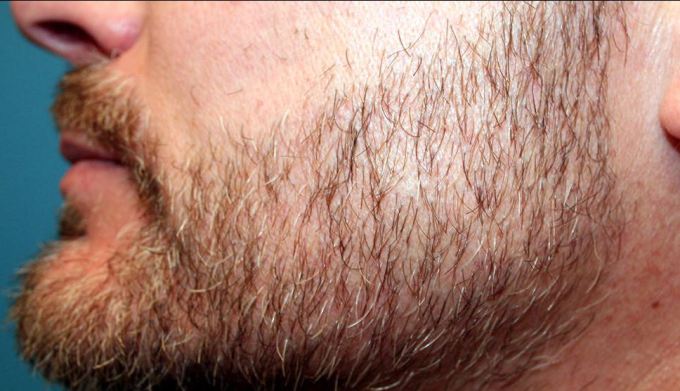Updated 30/10/2023
It’s hard not to feel body conscious in a society full of style icons. Both male and female, always looking immaculate. A reason why many look to beauty products and treatments. To keep looking good. This isn’t the exclusive domain for women either. It’s no secret that male grooming is on the rise. Consequently, many men are now spending hundreds of pounds a year. That is only on skin care and hair products. Let alone beauty treatments. Not including cosmetic procedures such as hair transplants. In fact men are now spending more time and money on their appearance. Including beard transplants.
Social Awareness
Some view this as simple vanity. While others argue it’s about improved self-confidence. Taking pride in our appearance is actually perfectly natural. Just some may just wish to go further than others. Some cases men are willing to go to great lengths to get the perfect look. For example undergoing surgical procedures and treatments. Such as beard hair transplants.

Whilst conventional hair transplants aren’t a new thing. Remember Wayne Rooney’s famous hair implants. Dramatically changed his look. Now, it is not just the hair on the top of the head that is causing a stir. Beard transplants are on the rise in the UK. As a result becoming more and more popular.
It´s reported that a staggering 45% of men are unable to grow a full beard and sideburns. As well as experiencing bald patches in their facial hair. The number of men having a beard transplant is only on the rise. Last year alone more than 4,500 men underwent a beard hair transplant in the UK. Three times more popular than nose jobs. Which is a staggering figure in itself.
Beard envy is a compelling factor
There are numerous triggers to wanting more hair. That make men feel self-conscious about their facial hair, or lack of. This includes fashion and trends. Ro sport stubble or full beards. Very popular at present. With younger men especially. Then there are the Hollywood celebrities. The likes of Ben Affleck and Hugh Jackman create envy with their five o’clock shadows and full beards. Not forgetting, style icon and ex-England footballer David Beckham. All seem to be able to don at the drop of a hat. Continuously changing their beard style.
59% of men reported that a beard makes them feel more macho. As a result, it´s no coincidence there has been a an increase in beard hair transplants being performed. For some men, it’s not just a personal issue. But impacts on their occupation. For men blessed with a ‘baby face’ for example. That have very little facial hair. These men may undergo a beard hair transplant to improve self-confidence. In business and at work in general. Looking young can make people feel you have less experienced. Affecting their judgement on your skills.
Types of facial hair loss
Facial alopecia or Alopecia barbae is a form of a larger hair loss disorder. Called alopecia areata. Alopecia barbae is a result of the immune system attacking the hair follicles. This triggers hair loss in small, circular patches. Alopecia barbae is limited to your beard. As the name perfectly suggests. Alopecia areata can affect any part of the body. In some cases alopecia areata can trigger total hair loss on the head. This condition is called alopecia totalis. Alopecia areata across the body is called alopecia universalis.
Trichotillomania
Trichotillomania is a condition of impulsive or uncontrolled hair pulling. This can be from the beard, scalp, eyebrows, eyelashes or chest. Even genital or pubic hair is possible. According to the Trichotillomania Learning Centre. Officially classified as an impulse-control disorder. The condition has features that resemble obsessive-compulsive disorder, addiction and tic disorders. It’s a personal condition. As a result, the severity and location of the hair-pulling varies from person to person. In severe cases enough hair is removed to leave patches of hair loss.
Lupus
Hair loss can be an early symptom of lupus. According to some research. The condition can manifest itself in lupus-related skin inflammation. This tends to centre on the face and scalp. Combined with other aspects of the disorder inflammation can trigger hair loss. Lupus-related hair loss can affect all areas of facial hair. Your eyelashes, eyebrows or body hair. Treatment for lupus can be successful. As a result hair starts to grow back.
Treatment
Topical corticosteroids are often the first treatments for alopecia barbae and alopecia areata. They can be injected and taken orally. Also available, a newer class of medications called biologics. Treatments for trichotillomania include a form of psychotherapy. Called cognitive behaviour therapy. As well as the use of antidepressant medications. Treatments for lupus-related skin problems include corticosteroid creams. Low-dose oral corticosteroids and a malaria medication called hydroxychloroquine. More recently, beard transplants are considered an effective and permanent solution to the loss of facial hair.
Considerations
No treatment works for everyone. That being the case, results will vary from person to person. Some may not respond well to any treatment. Lupus sufferers can develop lesions in or near the hair follicles. These can trigger permanent hair loss. Trichotillomania may respond best to a combination treatment. Psychotherapy and medications. Men and women can develop alopecia areata, trichotillomania and lupus.
How a beard transplant works
For those interested in how the procedure works, you’ll be pleased to know that it’s a straightforward process with minimal downtime. The procedure is very similar to a head hair transplant as mentioned in previous posts. Tiny individual hair follicles are removed from the back of the scalp where the hair is thickest and then transplanted into the bald patches of the beard or sideburns. The hair that is taken from the roots is implanted through micro-incisions made on the face which are made to mimic pores.
This method prevents the evidence of scarring since the incisions are made so miniature. The hairs that are transplanted will continue to grow for the rest of your lifetime. During the first 10 days, the transplanted hairs actually look like stubble until they heal and begin to grow. This is great since a lot of men aren’t comfortable with admitting that they’ve had this type of procedure done, so anything that will prevent suspicion is helpful.
Tiny crust forms around the areas that were transplanted and will last for about a week. This crust is the skin scabbing up during the healing process. Once the transplanted hair takes root, the hair falls out. Since the roots are now permanent, the hair can grow back within a few months. At this point, the beard will finally be able to withstand regular shaving.
If you’re suffering from a lack of facial hair and feeling self-conscious, maybe a simple beard transplant could be the answer. If that’s the case, get in touch to discuss your options – it could be the start of a brand new you.
If you have any questions, then please feel free to contact us today on either method T: 0808 169 7210. E: info@hairdr.co.uk alternatively you can book a free consultation via our website.
FAQs
How is a Beard Transplant Performed?
A beard transplant involves the extraction of hair follicles from a donor area, typically the back of the scalp, and their transplantation onto the recipient area, which is the face. The procedure is performed under local anaesthesia, ensuring minimal discomfort for the patient.
Is a Beard Transplant Safe?
Yes, beard transplants are generally safe when performed by a skilled and experienced surgeon. It’s essential to choose a reputable clinic and surgeon to minimise the risk of complications. Most patients experience minimal discomfort and quick recovery.
How Long Does it Take to See Results?
Patients can expect to see initial results within a few months after the transplant. However, the final result may take up to a year as the transplanted hair gradually grows and thickens.
Will the Transplanted Hair Look Natural?
When performed by a skilled surgeon, a beard transplant can yield natural-looking results. The direction and angle of the transplanted hair are carefully considered to ensure a seamless integration with existing facial hair.
What’s the Cost of a Beard Transplant?
The cost of a beard transplant can vary depending on the extent of the procedure and the clinic’s location. On average, it can range from $3,000 to $7,000. It’s essential to consult with a surgeon for an accurate estimate.
Are Beard Transplants Permanent?
Yes, beard transplants provide permanent results. The transplanted hair will continue to grow naturally, and regular beard maintenance is not required.









